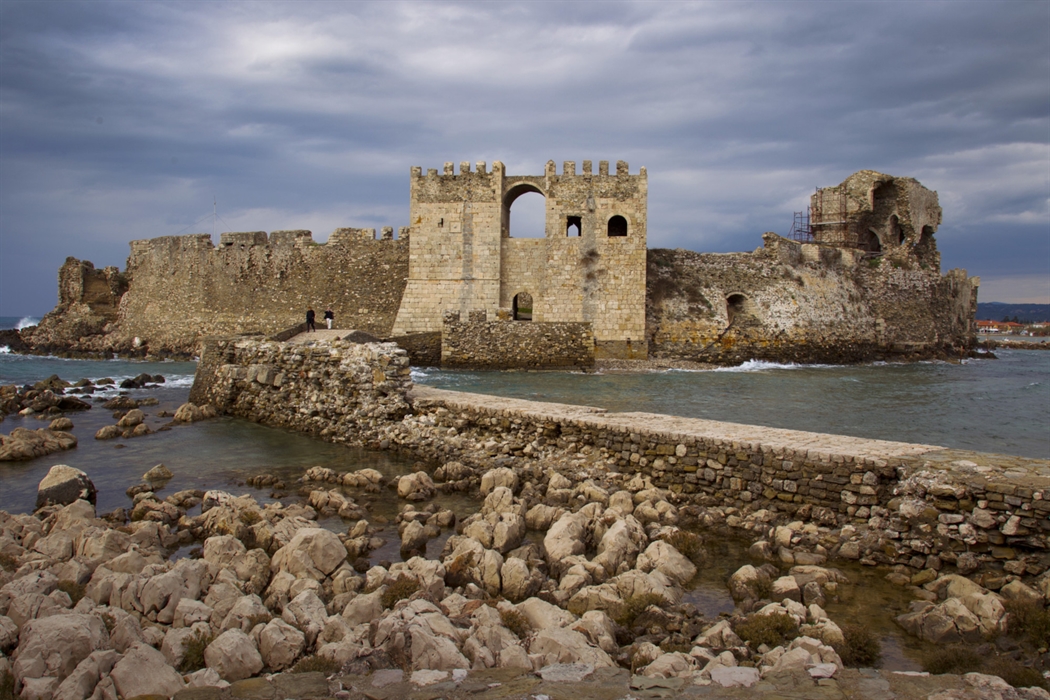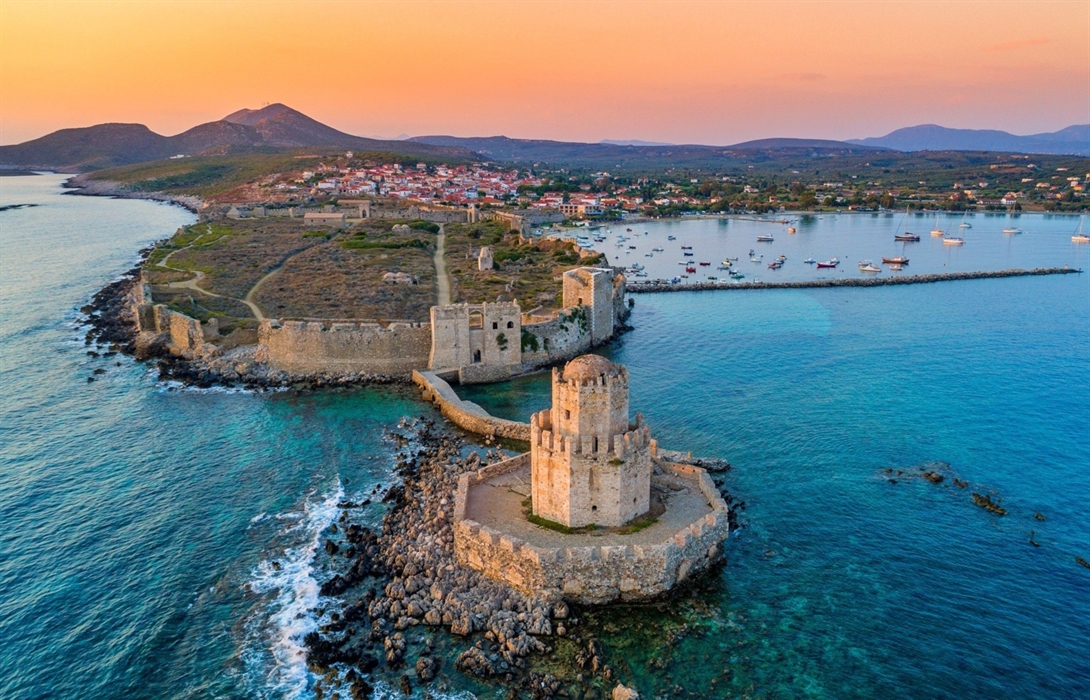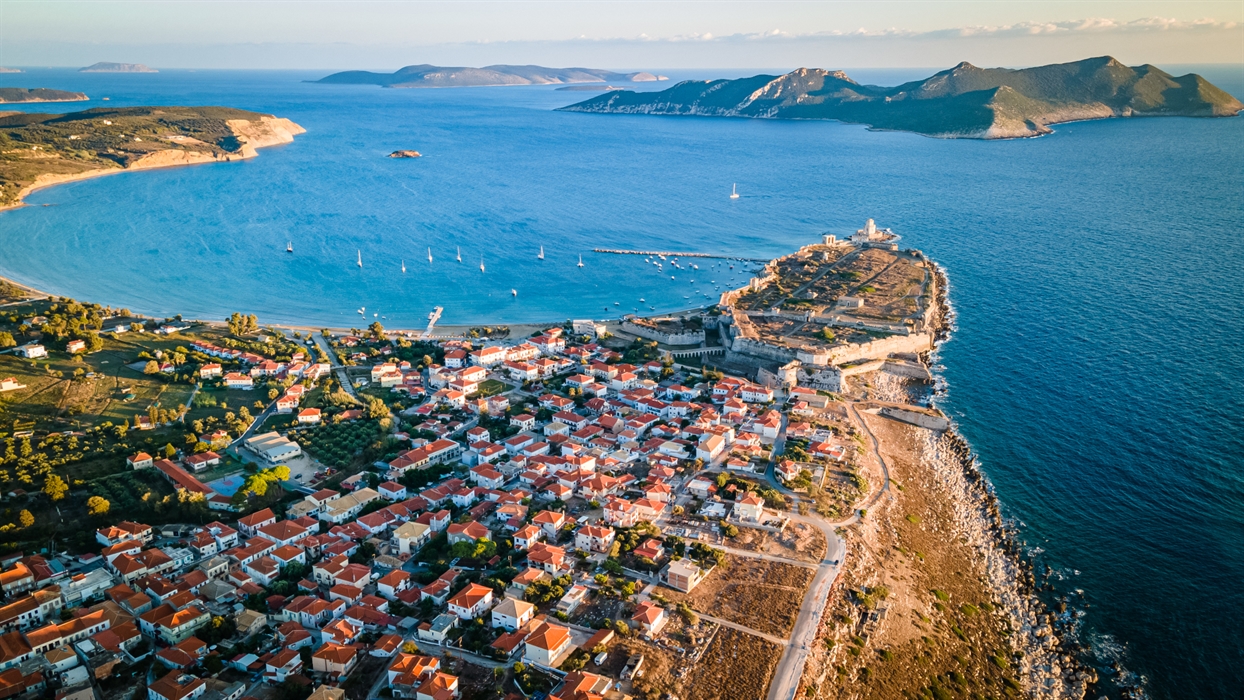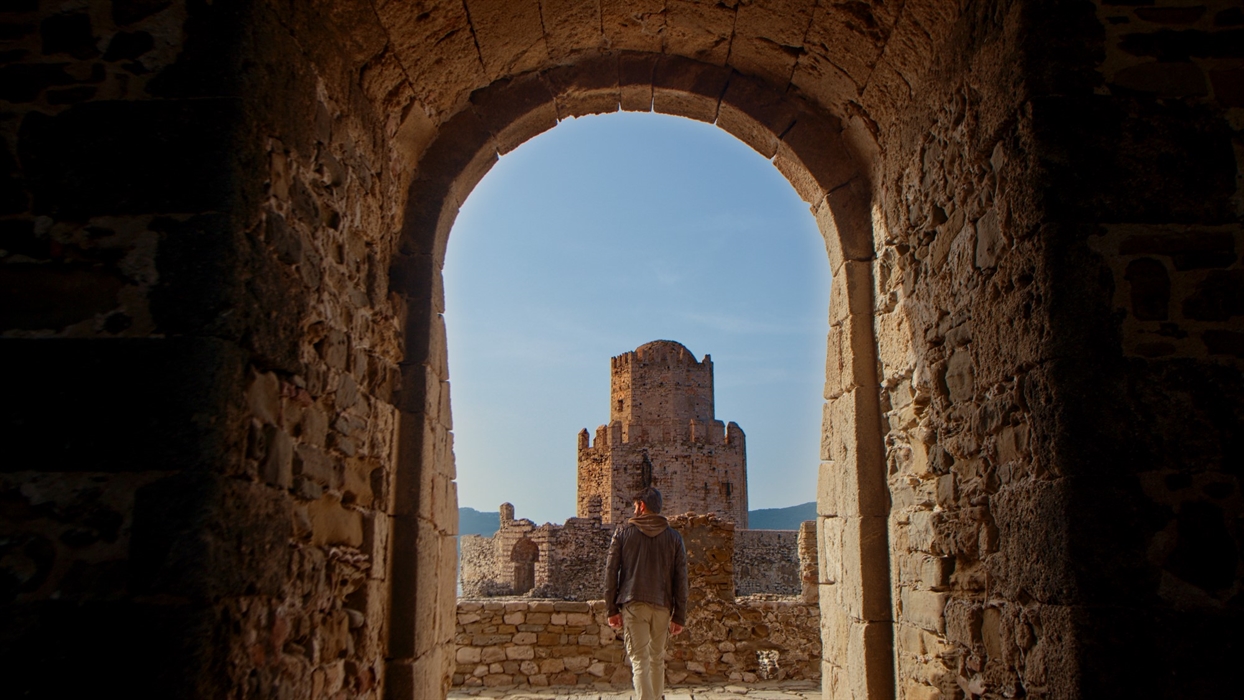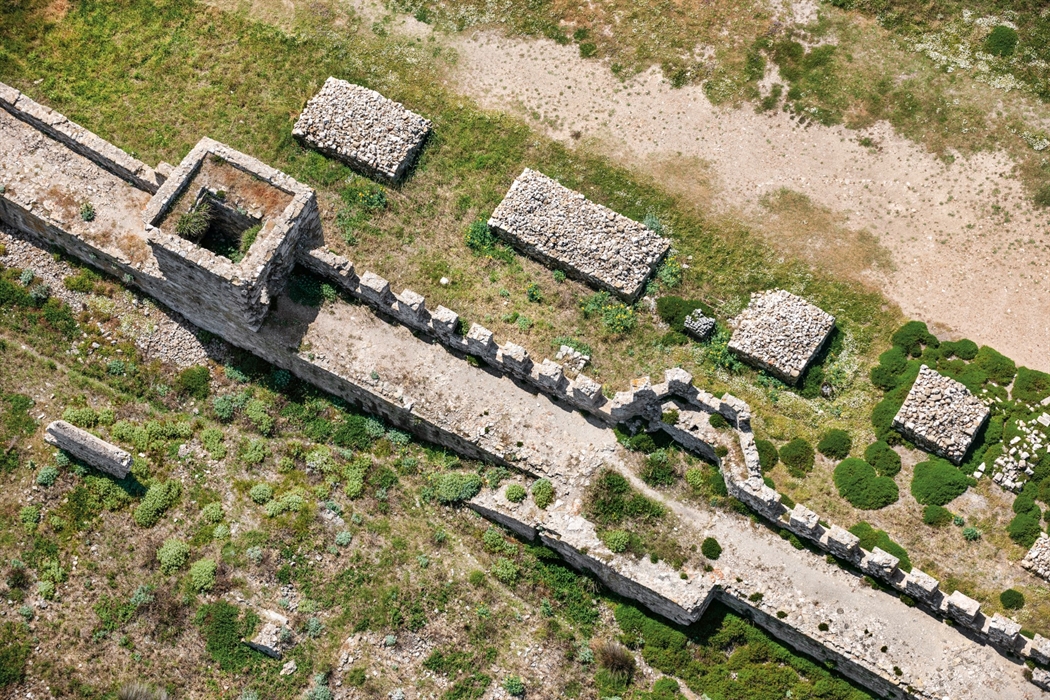Methoni castle
Don’t miss out on Methoni castle! A visit here is packed with history, spectacular views and a real feel of adventure as you travel back in time. Methoni is one of the most impressive and significant castles in the Peloponnese. The fortified city was built by the Venetians and flourished between the 13th-15th centuries. There’s a lot to see as it is a big archaeological site, over 93 acres, so make sure to take some water with you, wear a hat and proper shoes!
No matter when you catch sight of Methoni castle, you’ll be enchanted. It’s just as spectacular in the light of the setting sun as it is at night when it’s floodlit. And, of course, if you’ve been relaxing on the town’s beach or swimming in the sea you’ve probably already been enchanted by this fairy-tale castle guarding over the city.
Methoni is one of the most impressive and significant castles in the Peloponnese. The fortified city was built by the Venetians and flourished between the 13th-15th centuries. The site occupies the entirety of the SW Methoni peninsula, right up to the islet at the end which is fortified by the famous octagonal tower. So, if you want to go back in time, and get some great photos into the bargain, make a bee-line for Methoni castle.
Like much of the Peloponnese, the castle was conquered and reconquered again and again. During the first period of Venetian rule life in Methoni was organised to fit in with the interests of Venice. The city became an important trading centre as it was a mandatory stop for all Venetian ships traveling to the Eastern Mediterranean. However, this period of prosperity came to a sudden and bloody end in 1500 when the Ottomans laid siege to the city and then occupied it until 1686. It was then returned to Venetian rule after having been besieged by Morozini, but in 1715 the Ottomans recaptured it. At this point prosperity returned and the population grew, as did the commercial traffic in the port. During the 1821 Greek Revolution, the Greeks failed to take the castle -in fact, in 1825, Ibrahim Pasha landed at the port and settled there, making it the Egyptians’ base during their war campaign in the Peloponnese. In 1828 the Egyptians surrendered to the French expeditionary force led by General Maison. At that point, the settlement was moved outside the walls and the castle was abandoned.
TOUR AROUND THE CASTLE
The northern side of the Methoni castle, facing inland, was protected by a very strong double wall and a moat filled with sea water. In those days, the only way to get into the castle was across a wooden drawbridge. Nowadays things are a bit easier thanks to the engineers of the Expedition Scientifique de Morée who accompanied the French General Maison in 1828. They built a stone bridge with fourteen arches to cross the old moat, and they also renovated the gate with a curved arch and Corinthian capitals.
On either side of the entrance there are two large ramparts: The eastern rampart was built by General Antonio Loredan during the second period of Venetian rule, and the western one (or Bembo) was built in the 15th century. Once you go through the main gate there is a cobblestone path leading through two further gates on into the inside of the castle. This area is full of ruins from the old city state; the paved road that led to the Sea Gate, two Ottoman baths, parts of Doric columns, the church of the Transfiguration of the Saviour and, next to it, a gunpowder store. One of the most spectacular remains is Morozini's statue -a monolithic granite column topped by the winged lion of Venice.
At the southernmost edge of the precinct you can see the restored Sea Gate, with its two square stone towers that are linked by a platform and crowned by ramparts. From there, a paved walkway crosses over a small bridge and leads to the islet with the famous Bourtzi fort. The Venetians began building it shortly before 1500, and the Ottomans completed it when they took over the castle in the 16th century. It has a two-storied octagonal tower with a parapet with crenelated battlements on each floor.
The walls on the western side of the site were built during the first period of Venetian rule and were reinforced with five square towers. However, they are not as strong as the other walls, probably because rocks on this side make the castle invulnerable. Interestingly, an explosion during the Second World War revealed sections of well-made structures from the walls of Ancient Methoni. Also, some parts of the Ancient Greek buildings were used in the foundations of one of the square towers.
Tel. of the archaeological site: 27230 22010.
Location
Find the destination on the interactive map below.
Categories
Weather
Σχετικό περιεχόμενο χρηστών (UGC)
Ενημερωθείτε για ενδιαφέροντα θέματα γύρω από τον προορισμό μέσα από το περιεχόμενο των χρηστών μας
Discover 7 hidden gems of the Peloponnese
Many of you may have already visited some of the most renowned attractions…
TOP 10 archaeological museums in the Peloponnese
Olympia, Mycenae, Epidaurus, Diros Cave, Ancient Corinth, Messene and…
TOP 10 Castles in the Peloponnese
Castles galore! Mystras, Monemvasia, Palamidi, Methoni, Koroni,…
Newsletters
- About us
- FAQ's
- Map
- Tourism information centers
- Disclaimer
- Sitemap
- Our brand
- Media roum
- Adding your bussiness
- Corporate
- MICE

Peloponnese. Greece beyond the obvious





Design and creation from Cosmote
Marinas and Moorings
Diving centers
Get inspired
- Media gallery
- Blog
- The Peloponnese in the media
- Your feedback
- Users' general content
- Users' local products
- Users' events content
- Ask a local
More
- Accommodation
- Travel agencies
- Restaurants
- Services
- Destinations Map
- Weather
- Public transport
- Events
- Frequently asked questions
- Useful phones
- B2B
- Destination Data
- Contact

